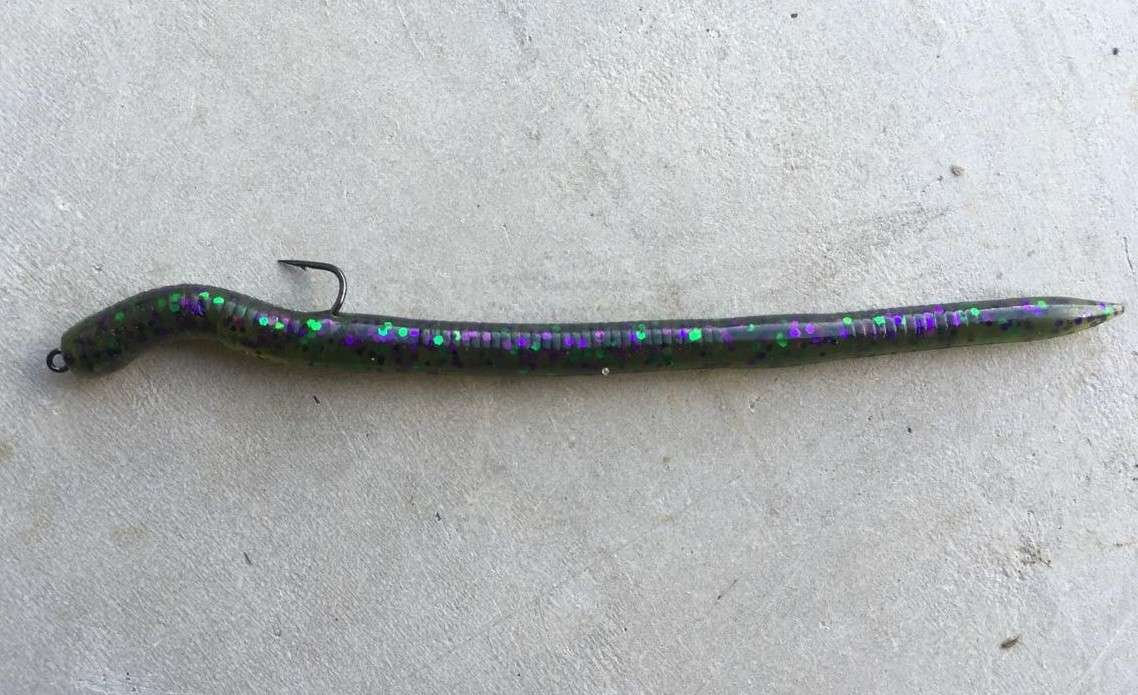
The more I’m around this business of bass fishing the more I come to believe that there’s not much new. Most of what we do to catch bass is a modification or an improvement of something that’s been around for a long time, and so it is with the spinning worm.
Those of us who’ve been fishing for a while will remember when pre-rigged plastic worms were all the rage. They had a harness of heavy monofilament line that held two or three hooks in place. All you had to do to fish one was tie your line to the loop in the front of it.
I still remember when I bought my first one. I was 11 or maybe 12 years old. As soon as I left the store I went down to the nearest lake and tried it out. At first I thought I’d been taken. All it did was slowly sink and then spin like a corkscrew when I retrieved it. But, on the third or fourth cast I caught a 3-pounder. It didn’t take me long to save up a few dollars and buy some more of them.
That lure is making a comeback. You won’t hear much about it right now, but it’s fairly common in Japan. It’s developing a real following on the West Coast, and a pretty good number of Elite Series are quietly using it when they want to show clear water, highly pressured bass something different. I’m in that group.
Like everything these days, however, our modern version is fancier. I start my rig with a Havoc Bottom Hopper worm although I will say that almost any straight tail worm will work. Note that I said straight tail. If you use a twister tail, the ripple action has a tendency to straighten out the corkscrew action of the worm.
My worms are armed with a VMC SpinDrift hook. It’s made for this exact presentation. The reason I use the VMC hook is because it has a bait keeper and a swivel already on the shank just before the eye. The swivel is important. An in-line barrel swivel works OK and it’ll keep the twist out of your line, but you have to tie it on with a knot on each end. Knots, even the best that are tied by the best, are always problematic.
Always rig your worm with a twist and a kink in it. That’ll insure you get a good corkscrew action. Do everything you wouldn’t do when you Texas rig a worm to avoid line twist.
I fish my spinning worms Carolina style with a slow lift, pull and drop retrieve. If I want to get a little more depth — say I’m fishing below 5 feet — I add a split shot sinker. In open water I’ll rig my hook in the worm with the hook exposed. If I’m around heavier cover, I’ll rig it Texas style.
This is a spinning tackle technique. Use a long rod — my choice is an Abu Garcia 7 foot, 10 inch model — and light line. When the water’s clear I use 6-, 8- or 10-pound-test fluorocarbon. When there’s a little more color in it I spool up with braid and a fluorocarbon leader.
Give the spinning worm a try the next time you’re faced with really tough conditions. Chances are the bass have never seen anything like it.
Mike Iaconelli’s column appears weekly on Bassmaster.com. You can also find him on Facebook and Twitter or visit his website, mikeiaconelli.com.





